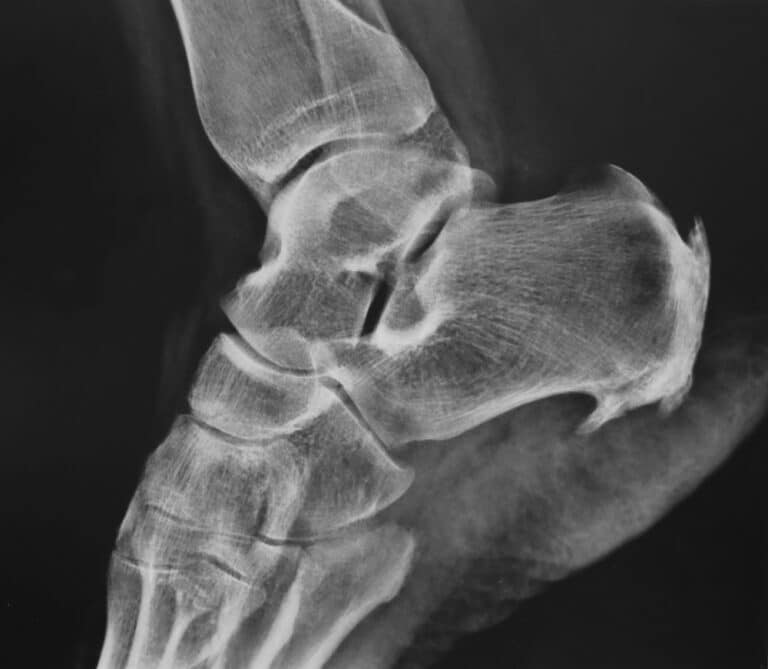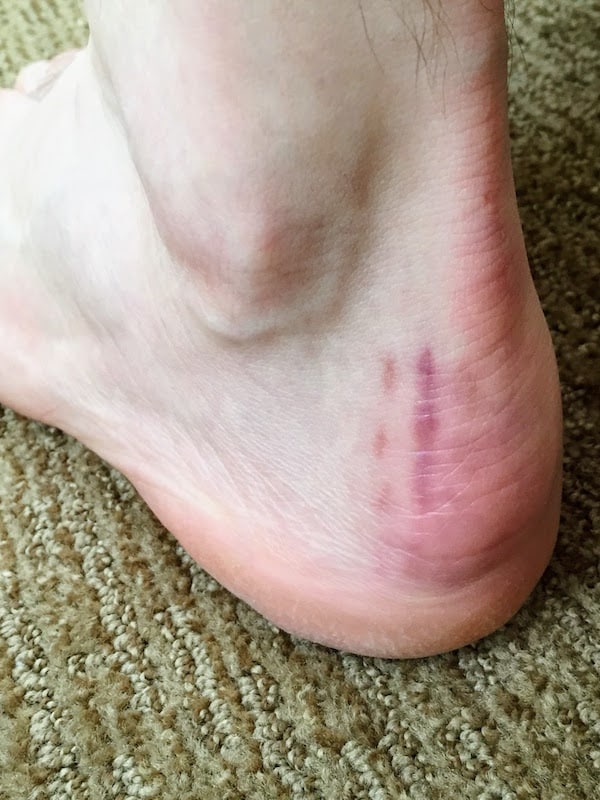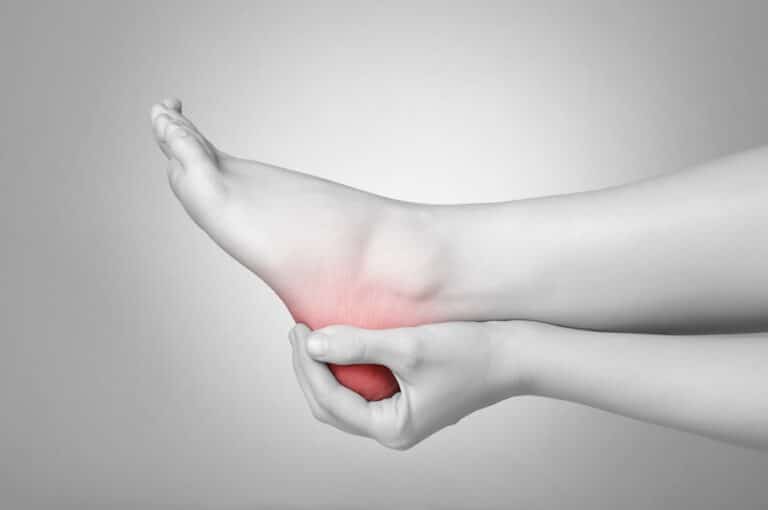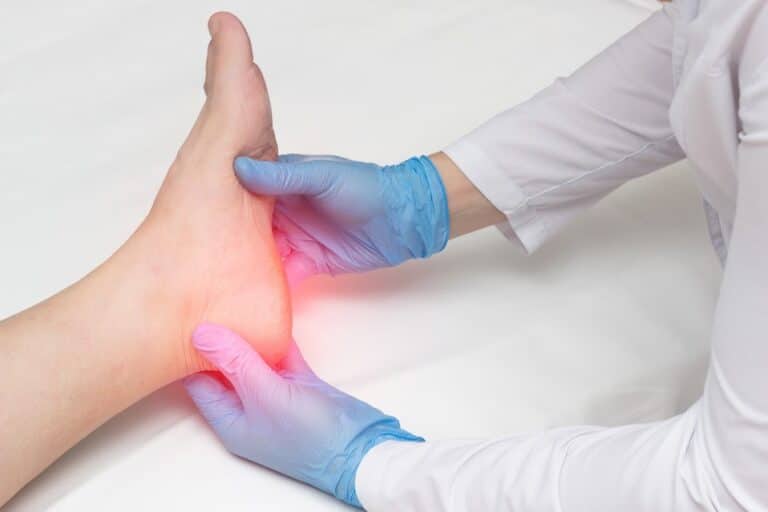Corn development on the toes is common, whether corn on the big toe or any other. While it can be prevented, it’s also not the worst thing to happen since it’s treatable. Some people can undergo corn removal surgery, but it’s usually the last resort. Here are symptoms and treatments for corn on the big toe.
Get a 10% Discount on Corn Removal Surgery
What Are the Symptoms of Corn on the Big Toe?
Corns are hardened areas of the skin, rough to the touch and bumpy. They can often take on a yellowish color as they develop, which is often a sign of dead skin accumulation. Corns often develop on the toes that take the most friction – pinky and big toes, precisely.
However, corns can often develop on other toes and even fingers on the hands; a lot depends on how often and long a person wears shoes or works with their hands. In that sense, corns can be prevented, but only if your job or hobbies allow it.
The main symptoms include this skin roughness and discoloration, but others can also be:
- Desensitized skin on the corn area,
- Pain,
- Redness,
- Swelling,
- Continued pressure on the toe where the corn is located,
- Blisters.
What Are the Causes?
Corns on the toes are, in 99% of cases, caused by continuous friction from shoes; they could be ill-fitting or worn for too long. Standing, walking, and running for long periods can cause damage to the feet beyond developing corns. If you can rest, recover, and soak your feet regularly, you should. These are common home remedies for corns.
Common patients that come for corn removal are also athletes and those spending a lot of time using their feet and sustaining friction. It’s not unusual for patients with other foot problems to also complain about corns, such as those with hammertoe, bunions, and calluses.

How to Know You Have a Corn on the Big Toe?
Considering the corn’s obvious (and eye-poking) appearance, it’s hard to not spot one. The bumpy, rough skin patch on the big toe will also likely hurt when wearing shoes or tight socks.
If you notice a change on your big toe (or any toe) but aren’t sure what it is, visit a podiatrist or foot surgeon for the correct diagnosis. The best way to learn how to get rid of corns on the big toe is by getting an official check-up and treatment plan.

What Are the Treatment Options?
Treatment options for corns can go two ways – non-invasive and surgical. The most common include non-invasive treatments since corns are removable without going onto the operation table.
If a doctor deems it necessary to undergo surgery, the procedure would be minimally invasive and short; patients are free to leave the same day and don’t go through painful or prolonged recovery.
Non-invasive Treatments
Since corns are layers of thick skin, it’s often possible to just file them away; still, it’s not recommended while your feet are dry – this could cause additional irritation, redness, swelling, and potential complications.
You should soak your feet so that the thick skin layer can soften; you can also try using oils to remove corns or any over-the-counter creams and solutions for that specific problem.
Very often, the simplest solution will include soaking your feet in gentle soap water or water with Epsom salts; after a good soak, the corn on your big toe will soften. After soaking, pat your feet gently with a towel and add regular foot lotion.
When you feel that the corn is soft enough, use a pumice stone to file it off gently. Additionally, some of the best things for corns in the pharmacy include corn pads, designed to relieve pressure from the painful area.
Surgical Procedure
Sometimes corns on the toes require surgery, but that’s up to a medical professional to diagnose. In many ways, surgery is the best way to get rid of corns, but it’s not always necessary. If it does become necessary, it’s because the corn is hard and deep-rooted.
Structural deformities in the feet are also a cause for concern when checking for corns, and if you have multiple issues, such as hammertoe and corns, a doctor may suggest surgery as the best option for getting rid of both simultaneously. Still, this is only recommended if the issues persist on the same foot.

How to Prevent Corns?
Corns are preventable, but avoiding foot issues requires caring for them. We know this part of the body is often neglected, and many people feel uncomfortable touching their own feet. Try to get used to touching them as much as possible because caring for them will result in prolonged health.
Feet in good condition will carry you farther and faster than imaginable. To ensure they’re healthy and you can prevent a corn on the big toe or elsewhere, try the following:
- Be mindful when picking footwear; ensure it’s comfortable if you have a wide foot profile or a high arch; get to know your foot anatomy to fully understand what sort of shoes are right,
- Always remember to wear soft wooly or cotton socks with all your shoes; this is crucial because the friction between the shoe and the foot is increased without a protective layer,
- Find suitable insoles or cushioned shoes for added comfort; if available, try to find a good custom insole maker that could improve your walking quality and foot health.
When Should You Visit Your Doctor?
If you notice changes on your big toe or any other toe and can’t identify the issue, visit a doctor. This is the best option for taking away all your doubts and fears. If you can identify a corn and it doesn’t hurt, you can avoid seeing a doctor and try OTC medication.
However, if you experience a lot of pain or notice redness and swelling around the corn, seeing a doctor is mandatory. Also, if you have underlying conditions such as diabetes or an increased risk of infection, a medical professional should have a look at your feet and give you the right therapy.

Give Your Miami Surgeon a Call and Get Rid of Corn on the Big Toe
If you’re experiencing pain and discomfort from corns on your feet, it’s time to see a doctor. For anyone in the Miami area, Luxe Foot Surgery is the right place for all your needs and problems. Our surgeons are professional and experienced, and our staff is always there to help. You can contact us via email or phone or visit us in Miami every weekday from 9 AM to 6 PM.
FAQ
What Does a Corn Look Like on Your Toe?
On your toe, corns look like thick, round blisters. They’re actually hardened, tough skin caused by wearing tight or small shoes, not wearing the right socks, or spending too much time causing friction to the feet (running, walking, and alike). Corns are also often discolored, with light yellow pigmentation and sometimes redness.
Do Corns Go Away on Their Own?
Corns can go away on their own if you wear comfortable shoes when you start feeling pressure on your toe or toes. However, most corns, when they do appear, can’t simply go away without at least some care and dedication to resolving the issue. You can do it easily with oils, soap, pumice stones, and foot lotions.
How Long Does It Take for a Corn on Toe to Go Away?
Corns can last a long time, especially with prolonged friction and pressure. If you take measures to remove them, you can see results quickly. If you undergo surgery, the corns will be gone. Note that corns can sometimes return if you don’t care for your feet.
Can You Pick a Corn Out of Your Toe?
This depends on the type of corn. Hard corns aren’t removable by hand – they often have to be surgically or professionally removed. Surface-level corns can be removed with some foot care tools, but it’s not recommended to use your hands or fingers to pick them out; this could cause an infection.
References
- Cleveland Clinic. Corns and Calluses [Internet]. Cleveland Clinic. [Accessed on April 21, 2023]. Available from: https://my.clevelandclinic.org/health/diseases/16896-corns-and-calluses
- Healthline. Foot Corn: Causes, Treatment, and More [Internet]. Healthline. [Accessed on April 21, 2023]. Available from: https://www.healthline.com/health/foot-corn
- Mayo Clinic. Corns and Calluses – Symptoms and Causes [Internet]. Mayo Clinic. [Accessed on April 21, 2023]. Available from: https://www.mayoclinic.org/diseases-conditions/corns-and-calluses/symptoms-causes/syc-20355946




